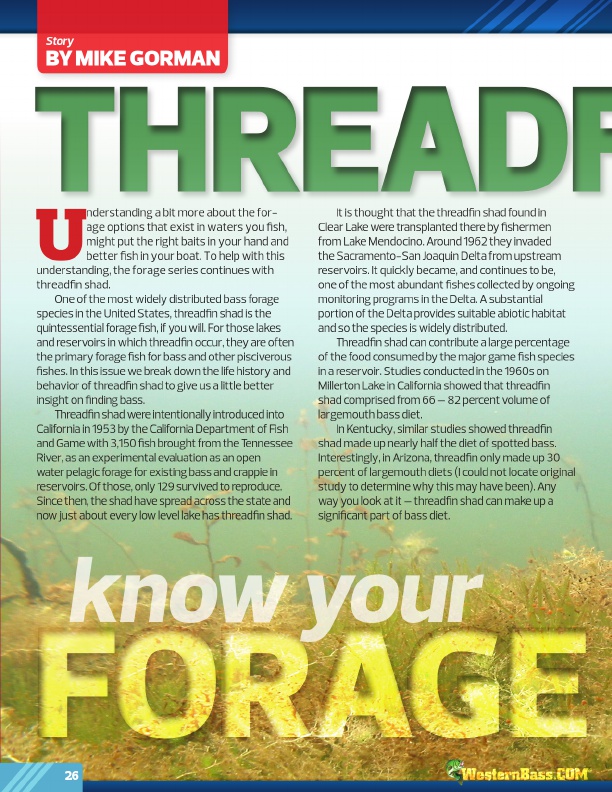
®
T F O HRE A A G D E F
know your
Story
BY MIKE GORMAN
U
nderstanding a bit more about the for-
age options that exist in waters you fish,
might put the right baits in your hand and
better fish in your boat. To help with this understanding, the forage series continues with
threadfin shad.
One of the most widely distributed bass forage
species in the United States, threadfin shad is the
quintessential forage fish, if you will. For those lakes
and reservoirs in which threadfin occur, they are often
the primary forage fish for bass and other pisciverous
fishes. In this issue we break down the life history and
behavior of threadfin shad to give us a little better
insight on finding bass.
Threadfin shad were intentionally introduced into
California in 1953 by the California Department of Fish
and Game with 3,150 fish brought from the Tennessee
River, as an experimental evaluation as an open
water pelagic forage for existing bass and crappie in
reservoirs. Of those, only 129 survived to reproduce.
Since then, the shad have spread across the state and
now just about every low level lake has threadfin shad.
It is thought that the threadfin shad found in Clear Lake were transplanted there by fishermen from Lake Mendocino. Around 1962 they invaded the Sacramento-San Joaquin Delta from upstream reservoirs. It quickly became, and continues to be, one of the most abundant fishes collected by ongoing monitoring programs in the Delta. A substantial portion of the Delta provides suitable abiotic habitat and so the species is widely distributed.
Threadfin shad can contribute a large percentage of the food consumed by the major game fish species in a reservoir. Studies conducted in the 1960s on Millerton Lake in California showed that threadfin shad comprised from 66 – 82 percent volume of largemouth bass diet.
In Kentucky, similar studies showed threadfin shad made up nearly half the diet of spotted bass. Interestingly, in Arizona, threadfin only made up 30 percent of largemouth diets (I could not locate original study to determine why this may have been). Any way you look at it – threadfin shad can make up a significant part of bass diet.
26